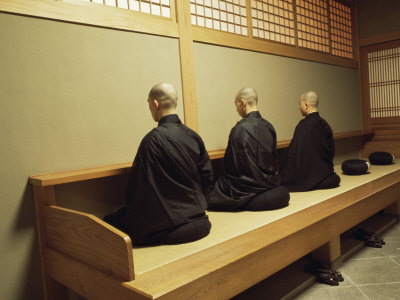In signing up for this class I wasn't really sure what to expect, but I am so glad that I took it. I would have to say this class has taught me so much about New Orleans, and just religion in general. One of the reasons I chose to go to school in New Orleans was because it is like no place else in the world. When I first came here for a visit I remember walking through the French Quarter and all over downtown and saying to myself this is one of the most fascinating places I have ever been to. Learning about the culture of this city has just made me love it even more. When we studied the Mardi Gras Indians and the history of Mardi Gras I found out things that I had never known, let alone even thought about. On top of this, going to all the congregations was a real eye-opening experience as well. I knew New Orleans was a Catholic city, but to be able to see how they practice their religion first-hand was really awesome. Overall this class was one of my favorites this year because not only did I discover new things about New Orleans, I actually learned things that interested me and will never forget.
Tuesday, April 30, 2013
David Koresh
 |
| Drawing depicting David Koresh's life |
After hearing about the Branch Davidians, I not only wanted to know more about it, but I was particularly interested in David Koresh's life before he because leader of them. Koresh liked for people to think of him as a loser and often lied and said he dropped out of sch
ool years before he actually did. David Koresh wasn't actually his real name, rather he was born Vernon Wayne Howell. He was dyslexic but he learned to write and turned out to be an average student but dropped out in the 11th grade.
As a young boy he loved music and going to the Adventist church with his grandmother. By 12 he was already lecturing other boys with long, memorized scripture. As he got older his passion got bigger. Throughout his teens he rambled around, worked on his guitar skills, and even got a preacher's teenage daughter pregnant and left her. In 1981 he moved to Waco to live at Mount Carmel, the Branch Davidian compound. In the mid-1980s Howell traveled to Israel, and when he came back he believed that he had the "spirit".
In 1990 he changed his name to Koresh after King Cyrus, who allowed the Jews to return to their homeland. Koresh claimed to have unlocked Seven Seals within the Book of Revelation. Generally, the Seven Seals are supposed to portend events leading to the apocalypse.
Koresh followed the teaching of "spiritual weddings" which would take place between him and any female follower that God wanted him to have. This meant that he could marry underage girls and even legally married women. Although some followers observed his actions as a test of their faith, some other followers refused to deal with it and left the convent.
Monday, April 29, 2013
UpStairs Lounge Fire
 |
| Plague in New Orleans dedicated to the Upstairs Lounge |
The Upstairs Lounge arson attack occurred in 1973 at a gay bar in New Orleans. It was the last day of gay pride weekend and Metropolitan Community Church was holding their services there on the second floor. At the time of the fire about sixty people were were listining to music and discussing an upcoming MCC fundraiser.
At around 8 o clock the fire was started and everyone in the bar was running for safety. The bartenders, pastors, and even members of the church were all trying to save one another and get everyone to safety. Unfortunately not everyone was saved and thirty-two people ended up dying in this 16 minute fire. Since people ran back in to go save people, it was seen in the aftermath of the fire that some of the people died with others in their arms trying to get them back to safety.
After the fire the arson attack got a lot of coverage and the victims all had funerals in which were recognized all over the city. Reverend William P. Richardson of St. George's Episcopal Church agreed to hold a small prayer service for the victims of June 25th. Lots of people didn't agree with him for holding a service so he recieved over 100 complaints and a mailbox loaded with hate mail. Eventually two memorial services were held at Unitarian Church and St. Marks United Methodist Church. During the time of the funerals a few anonymous individuals stepped up and paid for three unknown men's burials.
Saturday, April 27, 2013
Branch daviden
In the presentation on Tuesday, professor Wessinger talked about the incident that happened with the Branch Daviden. In that presentation, we learned how the government caused the death of a massive number of people who belonged to the Branch Daviden congregation and how they tried to cover up the incident using the FBI. This incident to me seem like one of the many underhanded things the government does when you consider incidents like the Vietnam war and recently the government's lie about the weapons of mass destruction in Iran, though the reasoning behind why the government targeted the Branch Davidens and what they had to gain is still remains a mystery to me.
ZEN
This Sunday I plan on visiting the zen temple on Camp St. as part of my religious visit. Before my visit I did some research on what Zen is and found that Zen is a practice where a person sit in a particular position and and focus only and breathing. This practice is known as Zazen, which means seated meditation.
Rosaries
 |
| rosary |
In Catholicism, a rosary is a "crown of roses" that is used to pray to the Virgin Mary. It is called a crown of roses because catholics believe that each time they say a Hail Mary they are giving her a beautiful rose and that each complete Rosary makes her a crown of roses. The rose is the queen of flowers, and so the Rosary is the rose of all devotions and it is therefore the most important one. It is considered to be a perfect and humble prayer, like the Virgin Mary is. It is used to commemorate the events of Jesus's life. The way you use this for prayer is:
- Make the Sign of the Cross and say the "Apostles' Creed."
- Say the "Our Father."
- Say three "Hail Marys."
- Say the "Glory be to the Father."
- Announce the First Mystery; then say the "Our Father."
- Say ten "Hail Marys," while meditating on the Mystery.
- Say the "Glory be to the Father."
- Announce the Second Mystery; then say the "Our Father." Repeat 6 and 7 and continue with Third, Fourth and Fifth Mysteries in the same manner. (taken from here)
People pray the rosary, usually, after a confession. It is not considered to be a punishment, rather a form of penance, where the person can reflect on their spiritual sin and grow from this.
Zen Gardens
Maybe not part of a specific religion, but as a method for enhancing meditation is the zen garden. Originated in Japan, they are meant to capture the essence of nature, not necessarily replicating it. These gardens are thought to enhance meditation and therefore a connection to nature and God. They have existed at least since 784 in Japan. They are thought to bring peace to the mind and soul. White sand and gravel had long been a feature of Japanese gardens. In the Shinto religion, it was used to symbolize purity, and was used around shrines, temples, and palaces. In zen gardens, it represents water, or, like the white space in Japanese paintings, emptiness and distance. Every aspect of the gardens is used to represent something greater in nature but they are placed in a composition of unity and balance to enhance relaxation and peace of mind.
 |
| Zen Garden |
Covenant of the Pentacle Wiccan Church
The Covenant of the Pentacle Wiccan Church was founded in
1994 in New Orleans by Arch-Priestess Emeritus Velvet Rieth. While their
website offers little in the way of their founding and their history in New
Orleans, it does detail their theology well. The mission of the church is to
bring people of many backgrounds together for worship and learning. Wiccans
worship the anthropomorphized embodiment of nature, the Mother Goddess, and her
consort Cernunnos, the Horned God. The Horned God, portrayed as a man with
antlers embodies the creatures in nature, as well as the various death and
rebirth cycles that keep nature flourishing. To equate him to Satan due to his
appearance would be grossly incorrect; since Wiccan has no embodiment of evil
and that the Horned God doesn’t embody anything that would be considered evil. Wiccan
traditions date back to the Stone Age peoples of Northern Europe. They view everyone as divine and that divinity
is gender neutral. Wiccan ethics, like most other religions, is based off of
the Golden Rule, although they do not accept the concept of sin. Wiccan
festivals like Beltane and Lammas celebrate natural forces and occurrences like
fertility and the harvest. The full moon of every month is a very important
day, and the month it takes place in determines which spells would work best.
All members of the church can become priests and priestesses, and there are a
number of ranks of priesthood ranging from First Degree to Elder. The New
Orleans clergy is made up of Rev. Velvet Rieth and Debra Jeffreys, both Fourth
Degree Priestesses (an honourary title in the church) as well as Susan Kagan
and Linda Murphy, Third Degree Priestesses. The Church offers various religious
services for the community of New Orleans as well as Prison Ministry and
Military Outreach. Their website does not mention anything about charity services.
Their website is: www.swampwitch.net/
The Process Church of the Final Judgement
The Process Church of the Final Judgment originally
developed in London in the 1960s and 1970s, founded by Robert and Mary Anne
DeGrimston. As an offset of Scientology, the Process Church was denounced by L.
Ron Hubbard, forcing them to flee to a small town in Mexico where the majority
of its dogma developed. While in Mexico, the church recognized Jehovah and the
one true God but over time, began to accept Jehovah, Lucifer and Satan as the
Three Great Gods of the Universe, and saw Jesus Christ as their emissary.
Jehovah was the stern and wrathful god that demands discipline from humanity,
Lucifer was the Light-Bringer who encouraged the enjoyment of life and Satan
was the receiver of lost souls, who instilled in humanity both the desire to
overcome human desires and the desire to sink into them. Between Gods and
humanity was an hierarchy of various angels, demons, archangels, elementals and
watchers. The Church believes that Lucifer and Jehovah are opposites and that
Christ and Satan are opposites. Once Christ and Satan are reconciled, Jehovah
and Lucifer will be united. Because the Process Church views Lucifer and Satan
as gods, they have been deemed as a satanic cult. The church eventually set up
headquarters in New Orleans and has become one of the most notorious cults of
all time. The Process Church still exists today, although it is nowhere near as
dark as people would like to believe and most of the urban legends surrounding
are based more on fear than fact. Timothy Wyllie has written extensively on the
Church and is considered an academic expert on them.
The Four Rules One Must Live By
The people of the International Society for Krishna Consciousness believe that living a spiritual life. In order to live such a spiritual life, they believe in abiding by four principles. These four principles include:
1. No eating of meat (including fish and eggs): The people of ISKCON believe in reincarnation, and whatever one does in this life will be paid for in the next. Therefore if one were to kill an animal they would be killed and eaten by a human in their next life.
2. No illicit sex: The people of ISKCON believe that sex is only allowed when married and is only to produce children to be raised Krishna conscious.
3. No gambling: The people of ISKCON believe that one should not gamble because it is a game of chance.
4. No intoxication of the body: The people of ISKCON believe that one should not intoxicate their body with caffeine, alcohol, tobacco, or any other recreational drugs. Therefore they do not drink tea, coffee, liquor, or drugs.
To an outsider like myself, these rules seem a little intense, but to the Krishna followers it it their way of life. In order to live the life that Krishna wants, one must live a simple one.
1. No eating of meat (including fish and eggs): The people of ISKCON believe in reincarnation, and whatever one does in this life will be paid for in the next. Therefore if one were to kill an animal they would be killed and eaten by a human in their next life.
2. No illicit sex: The people of ISKCON believe that sex is only allowed when married and is only to produce children to be raised Krishna conscious.
3. No gambling: The people of ISKCON believe that one should not gamble because it is a game of chance.
4. No intoxication of the body: The people of ISKCON believe that one should not intoxicate their body with caffeine, alcohol, tobacco, or any other recreational drugs. Therefore they do not drink tea, coffee, liquor, or drugs.
To an outsider like myself, these rules seem a little intense, but to the Krishna followers it it their way of life. In order to live the life that Krishna wants, one must live a simple one.
 |
| Dinner of one who follows the ISKCON rule of consuming no meat. Photo Credit: Google Images |
Zazen
In zazen one must focus on two elements one's posture and breathing. Zazen is the meditation of the practice of Zen. To begin zazen you pic out a pillow and you place it one the floor about a foot from the wall. You should be dress in comfortable clothing. Then you sit on your pillow in the position below.You stretch your spinal cord, arching your lower lumbar region., head to the sky, knees to the ground, hands as though your holding a large egg, and
ISKCON
For my religious visit, I went to ISKCON New Orleans. ISKCON stands for the International Society for Krishna Consciousness. This religion derives from Hinduism, and they praise their Lord Krishna through chanting and offering gifts. When we visited, they began by chanting and ringing bells. One might ask, "what do they chant?" The only thing that I recognized when they were chanting was their prayer. Like a Christian's Our Father, the people of ISKCON pray "Hare Krishna, Hare Krishna, Krishna Krishna, Hare Hare, Hare Rama, Hare Rama, Rama Rama, Hare Hare" on their prayer beads. Throughout their chanting, they danced and gave all their attention to their Lord. This was an awesome experience because it allowed me to see a different type of praising. Instead of going to a mass like I do every week, I got to participate in a chanting ritual. Even though I was not that familiar with their Lord, I still got to understand their love and devotion to Krishna.
 |
| Photo Credit: Google Images |
Ordination of Women
 |
| Group of Women ordained as Priests in a Protestant Church. |
Van Hanh Buddhist Center
My visit to the Van Hanh Buddhist Center out in New Orleans East was a great experience as it allowed me to view religion from the perspective of a different culture. I'm not going to make this blog about a religious report because I would prefer to discuss it in class. Instead I wanted to share some of the pictures taken from my visit to give you all an idea of how different the place looks like.
This is a of a statue of Kwan Yin who is regarded as the female Buddha.
This is a statue of an unknown saint that stands near the entrance of the temple. Incense sticks and candles are placed next to the statue as an offering.
The interior of the temple. The Buddha resides behind the altar. Notice the pillows on the floor that are used for meditating. The small wooden podiums are where the Cau An scriptures are placed to be read aloud.
Fiddler on the Roof
Tuesday's presentation on Touro Synagogue and Temple Sinai both
reflect a denomination of Reform Judaism, one in which Jewish customs and
traditions should be modernized. For some particular reason, that reminded me
of a movie entitled Fiddler on the Roof.
I watched the film in my sophomore year of high school so the details may be a
bit unclear. The film is an adaptation of the popular musical by Jerry Bock.
The film centers on a Jewish family living in a town of Tsarist Russia in 1905.
The Tevye family is considered to be a poor family and Reb Tevye struggles in
his position as the head of the household. His problems revolve around his
daughters and their marriages. Throughout the movie, Tevye is faced with the
reality that his family is breaking down, in which Tevye refuses to accept. Since
the movie is a musical adaptation, the songs also express themes of tradition and
family values.
If
you happen to come across the chance to see the musical I highly recommend it
(it may be weird if you don’t grasp the situation/background though). Or you
can watch/browse the film on YouTube. I am pretty sure the film has copyright
protections and whatnots, but I believe it’s something called: utilizing
resources.
Subscribe to:
Posts (Atom)




